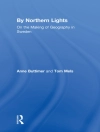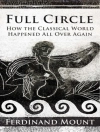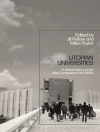Arabs and Young Turks provides a detailed study of Arab politics in the late Ottoman Empire as viewed from the imperial capital in Istanbul. In an analytical narrative of the Young Turk period (1908-1918) historian Hasan Kayali discusses Arab concerns on the one hand and the policies of the Ottoman government toward the Arabs on the other. Kayali’s novel use of documents from the Ottoman archives, as well as Arabic sources and Western and Central European documents, enables him to reassess conventional wisdom on this complex subject and to present an original appraisal of proto-nationalist ideologies as the longest-living Middle Eastern dynasty headed for collapse. He demonstrates the persistence and resilience of the supranational ideology of Islamism which overshadowed Arab and Turkish ethnic nationalism in this crucial transition period. Kayali’s study reaches back to the nineteenth century and highlights both continuity and change in Arab-Turkish relations from the reign of Abdulhamid II to the constitutional period ushered in by the revolution of 1908.
Arabs and Young Turks is essential for an understanding of contemporary issues such as Islamist politics and the continuing crises of nationalism in the Middle East.
Arabs and Young Turks provides a detailed study of Arab politics in the late Ottoman Empire as viewed from the imperial capital in Istanbul. In an analytical narrative of the Young Turk period (1908-1918) historian Hasan Kayali discusses Arab conce
Daftar Isi
ACKNOWLEDGMENTS
NOTE ON SOURCES
NOTE ON TRANSLITERATION
Introduction
I
Arabs and Arab Provinces in the Evolution of the Young Turk Movement
Tanzimat Centralization, Arabs, and Ottomanism
The Constitution, Parliament, and Arab Representation
The Hamidian Era: Continuity and Change
The Young Turk Opposition and the Arabs
Conclusion
2
The Second Constitutional Experiment, 1908-1909
Crisis of Authority in the Capital and the Provinces
The 1908 Revolution and the CUP in the Arab Provinces
The 1908 Elections
The Arab Parliamentary Contingent in the First Legislative Year
The Counterrevolution
Reform and Centralization
3
The Opposition and the Arabs, 1910-1909
‘Turkification’
Parliament: Arabs in Opposition Parties and Issues of Arab Concern
Unrest in the Arab Provinces
Conclusion
4
The Decentralist Challenge and a New ‘Arab Policy, ‘ 1912-1913
The 1912 Elections
The CUP’s Broken Fortunes and Arabs
The CUP Comeback
Conclusion: Islamist Reinterpretation of Ottomanism
5
A Case Study in Centralization: The Hijaz under Young Turk Rule, 1908-1914
The Young Turk Revolution and the Hijaz
The Grand Sharifate of Husayn Ibn ‘Ali
Extension of Ottoman Influence in the Hijaz
Sharif Husayn’s Campaigns
Sharif Husayn’s Struggle to Maintain His Authority
Conclusion
6
The War Years, 1914-1918
The Elections of 1914 and the Eclipse of the Reform Movement
The Hijaz on the Eve of War
The Arab Provinces and the Early Period of the War
The Sharif Husayn-Istanbul Correspondence
Syria under Cemal Pasha’s Governorship
The Arab Uprising and Istanbul’s Response
War, Politics, and Ideology
The End of the Empire and Turkish-Arab Relations
Conclusion
NOTES
BIBLIOGRAPHY
INDEX
Tentang Penulis
Hasan Kayali is Associate Professor of History at the University of California, San Diego.












